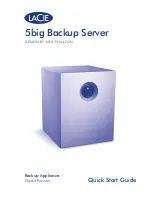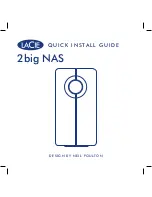
Glossary
g-5
Glossary
mirroring
A fault tolerance method in which a backup data storage device
maintains data identical to that on the primary device and can
replace the primary if it fails.
N_port
N_port is a node port, or a port on a disk or computer. An N_port can
only communicate with another N_port on another node, or to a
switch.
NL_port
N
ode
L
oop
p
ort
; a port supporting the Arbitrated Loop protocol.
node number
In UltraNet Edge 3000 networking, a node number is a number
assigned to a specific UltraNet Edge 3000. Each node number must
be unique within the network. Valid values are 00–FF
(hexadecimal). The node number is an arbitrary assignment; you can
use any numbering convention. The default is zero.
OSPF
Abbreviation for
O
pen
S
hortest
P
ath
F
irst, a routing protocol
developed for
IP
networks based on the shortest path first or
link-state algorithm. Routers use link-state algorithms to send
routing information to all nodes in an internetwork by calculating the
shortest path to each node based on a topography of the Internet
constructed by each node. Each router sends that portion of the
routing table (keeps track of routes to particular network
destinations) that describes the state of its own links, and it also
sends the complete routing structure (topography). The advantage of
shortest path first algorithms is that they result in smaller more
frequent updates everywhere. They converge quickly, thus
preventing such problems as routing loops and Count-to-Infinity
(when routers continuously increment the hop count to a particular
network). This makes for a stable network. The disadvantage of
shortest path first algorithms is that they require a lot of CPU power
and memory. In the end, the advantages out weigh the disadvantages.
OSPF Version 2 is defined in RFC 1583. It is rapidly replacing RIP
on the Internet.
PCI
See
P
eripheral
C
omponent
I
nterconnect.
Peripheral Component
Interconnect
A 32-bit local bus
(or 64-bit local bus for ATM OC-12)
that can
transfer data between the main microprocessor (the CPU) and
peripherals at up to 132 Mbps.
peripheral device
A piece of equipment such as a printer, monitor, disk, or tape unit,
that is not physically part of the computer.
protocol
A set of conventions governing the treatment and the formatting of
data in electronic environments (between computers, computers and
devices, or over computer networks).
Summary of Contents for ULTRANET EDGE 3000
Page 1: ...UltraNet Edge Storage Router 3000 Release 3 2 User Guide P N 620 000248 030 REV A...
Page 12: ...UltraNet Edge Storage Router 3000 User Guide xii Contents...
Page 14: ...xiv UltraNet Edge Storage Router 3000 User Guide Figures...
Page 40: ...1 1 8 McDATA UltraNet Edge 3000 User Guide UltraNet Edge 3000 Security...
Page 76: ...4 4 8 McDATA UltraNet Edge 3000 User Guide Building the Custom Chassis...
Page 106: ...5 5 30 McDATA UltraNet Edge 3000 User Guide Delivering the Configured Network...
Page 138: ...6 6 32 McDATA UltraNet Edge 3000 User Guide Delivering the Configured Network...
Page 208: ...8 8 36 McDATA UltraNet Edge 3000 User Guide Delivering the Configured Network...
Page 256: ...9 9 48 McDATA UltraNet Edge 3000 User Guide Delivering the Configured Network...
Page 278: ...11 11 16 McDATA UltraNet Edge 3000 User Guide UltraNet ConfigManager Upgrade...
Page 372: ...C 10 UltraNet Edge Storage Router 3000 User Guide OC 3 ATM Specifications...
Page 384: ...D 12 UltraNet Edge Storage Router 3000 User Guide F_Port Disk Streaming Settings...
Page 396: ...F 8 UltraNet Edge Storage Router 3000 User Guide SNMP Software Packages...
Page 414: ...J 6 UltraNet Edge Storage Router 3000 User Guide Configuration Worksheets...
Page 428: ...UltraNet Edge Storage Router 3000 User Guide i 6 Index...










































